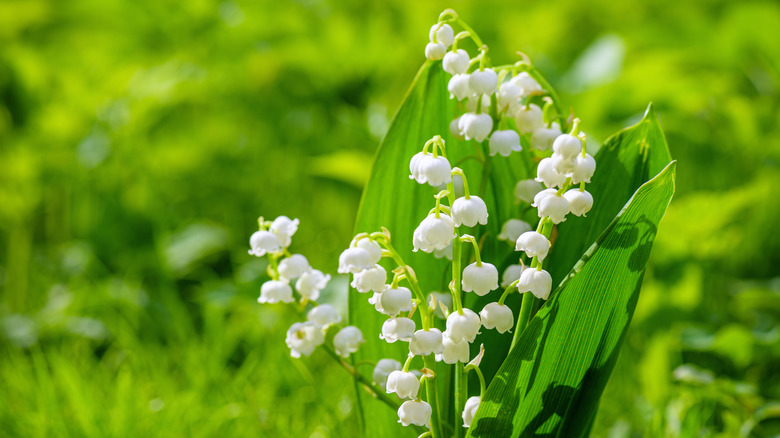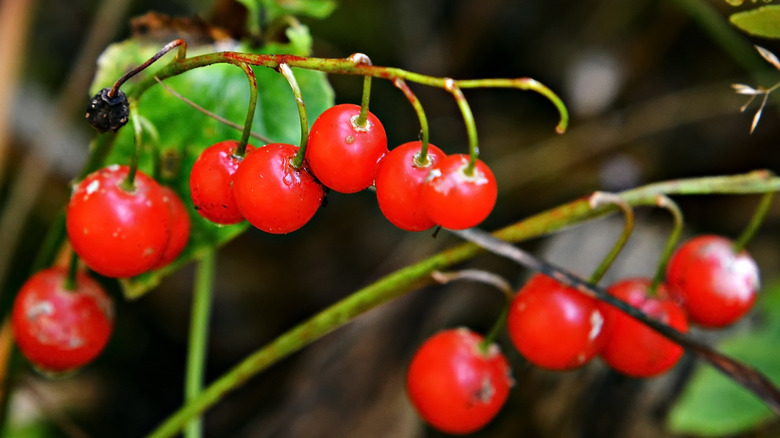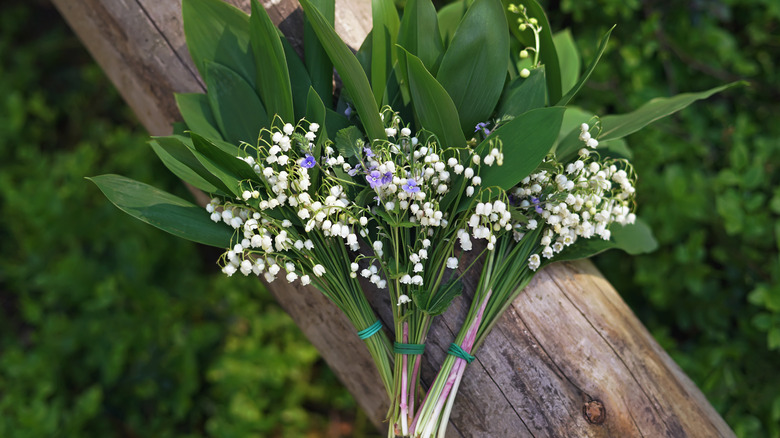Can You Get Poisoned By Lily Of The Valley?
The lily of the valley may be a nice addition to your garden, but the unassuming plant can be poisonous to you and your pets. Lily of the valley — with the scientific name Convallaria majalis — can be identified by its white, bell-shaped flowers that grow on a spike and lean to one side. It also gives off a sweet smell. According to Plant Care Today, the lily of the valley was used in medieval times as herbal medicine mixed with salves and was known as glovewort.
The plant is, in fact, poisonous and contains cardiac glycosides, which are compounds that can affect the nervous system, stomach, and heart (via Medline Plus). These are used in heart failure treatments but can be fatal when more than the recommended dose is ingested. Reports indicate that the lily of the valley has more than 38 cardiac glycosides, and while some may be purified for medicinal purposes, the majority of them cannot be purified for safe consumption. All parts of the lily of the valley are poisonous, especially its roots and seeds. Its sap can also cause flareups on the skin, and its berries, flowers, and stems have toxins as well.
Symptoms of lily of the valley poisoning
Lily of the valley poisoning can happen when parts of the plant — such as the leaves, flowers, or roots — are ingested, and it's especially poisonous to children and pets. As Medline Plus reports, some of the symptoms that may arise after ingesting lily of the valley include irregular heartbeat, diarrhea, disorientation, blurred, vision, and rashes or hives, among others. It is highly urged to seek medical help immediately if any part of the plant is ingested. The worst that could happen is a cardiac episode, which can lead to death — a rare occurrence, but possible.
The severity of lily of the valley poisoning depends on what part of the plant was ingested, the amount consumed, as well as the time between the ingestion and treatment. Common hospital treatments include IV fluids, antitoxin medication, or the use of activated charcoal to absorb the toxins. For severe poisoning that affects the heart, a temporary pacemaker may be needed, according to Plant Care Today. Commonly, the symptoms last for three days, in which the patient must be monitored in the hospital.
Proper handling of lily of the valley
Despite its poisonous properties, it's quite common to have lily of the valley plants in home gardens, especially for covering the ground. However, the plant spreads quickly and it can get out of hand. It's advisable to keep the plants from spreading by using a barrier or to dig the unwanted plants out. As cautioned by Fremont News Messenger, it's best to use garden gloves when handling lily of the valley to avoid having skin reactions. Protective clothing may also be helpful in cases where pruning is required. It's best to thoroughly wash your hands after handling the plant. Furthermore, as Plant Care Today notes, never get rid of the plant by burning them, as it can release toxic fumes.
With proper handling, the lily of the valley can be harmless. In fact, it's a common flower to be included on wedding bouquet arrangements, especially for royal brides, such as Grace Kelly, Kate Middleton, and Queen Victoria (via Town and Country Magazine).


